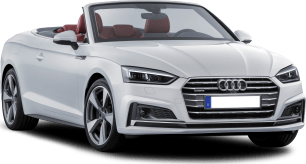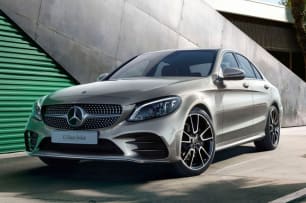The range kicks off with the C 200 and its C 220 d diesel siblings, then steps up to the C 300. Prices for these grades have increased by $1500 in this update but you’re being given more features. Above the C 300 live Mercedes-AMG’s wild animals – the C 43 and C 63 S.
The C 200 Sedan now lists for $63,400 (plus on-road costs), and if you want the Estate version add another $2500, and an extra $4500 for the Coupe, while the Cabriolet is $25,000 more at $88,400.
The C 220 d Sedan lists for $64,900 and the only other form it comes in is the Estate for $67,400.
The C 300 Sedan lists for $71,400, the Estate is $73,900, the Coupe is $84,900 and the Cabriolet is $101,900.
The C 43 Sedan lists for $107,900, while the Estate is $110,400, the Coupe is $111,900 and Cabriolet is $124,900.
The C 63 S Sedan lists for $159,900, however, prices for other body styles have not yet been announced.
So, about all the stuff you’re receiving in return for the price increase – a 10.25-inch display screen replaces the smaller one in the previous car and it’s standard across the range. Don’t stab and poke at it like I did with my finger for hours, because it’s not a touchscreen.
Also new is the 12.3-inch fully digital instrument cluster, and it’s standard on all grades, too. Apple CarPlay and Android Auto come on all C-Class cars.
Other standard features, starting with the C 200 and C 220 d, include 'Artico' upholstery, which is a synthetic attempt at leather, a reversing camera, shifting paddles, dual-zone climate control, aluminium roof rails on the Estate, LED headlights, 64-colour ambient lighting and 18-inch alloy wheels.
The C 300 has the C 200’s features and adds leather upholstery, privacy glass (coupe only), proximity key and 19-inch alloys. The C 300 also gains the 'Driving Assistance Package' which I’ll tell you all about in the safety section below.
The C 43 picks up the C 300’s equipment and adds an enormous list of its own gear including a new AMG steering wheel, brushed stainless steel pedals, Burmester 13-speaker stereo, heated sports front seats, head-up display, wireless charging, intelligent LED headlights, panoramic sunroof, black roof racks on the Estate, analogue clock and 19-inch AMG alloy wheels.
Metallic paintwork is also part of the C 43’s standard features list which includes 'Obsidian Black', 'Iridium Silver', 'Mojave Silver', 'Cavansite Blue', 'Emerald Green' and 'Brilliant Blue', but you’ll have to pay for 'Hyacinth Red', which is a sort of candy apple red. Non-cost colours for the lower grades are non-metallic black and 'Polar White' non-metallic.
The C 63 S adds to the C 43’s equipment list with its own AMG steering wheel, illuminated door sills, digital TV tuner, nappa leather upholstery, an electronic rear differential lock, 19-inch alloys in matte black with high-sheen rim, plus high-performance brakes with red calipers.

